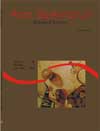<b>Abundance of zooplankton from different zones (pelagic and littoral) and time periods (morning and night) in two Amazonian meandering lakes</b> - DOI: 10.4025/actascibiolsci.v25i2.2011
Abstract
The abundance of zooplankton in two lakes of Southwest Amazonia was studied for 10 months in different regions and at different periods of the day. The lakes were Lago Amapá, located at 10°02'36''S, 67°50'24''W, and Lago Pirapora, at 9°27'21"S, 67°31'39". Both lakes are characterized as oxbow lakes. The aim of this study was to compare the pelagic and littoral regions, as well as to determine differences in the distribution of zooplankton in the water column in the morning and at night. Collections were made by filtering water through a 55µm zooplankton net into a 5L Van Dorn bottle, collecting 4L from the top and 5L from the middle and bottom layers, totaling 14L of water for each sampling location. In addition, physical and chemical parameters were measured, including transparency, temperature, pH, dissolved oxygen, electrical conductivity and turbidity. Anova (analysis of variance) and Tukey’s test were used. There was no statistically significant difference between the regions studied, nor between the two time periods examined. The results of the Pearson correlation (p < 0.05) demonstrated that the physical and chemical characteristics of the water correlated with the cladocerans Moina spp. (represented by M. minuta and M. reticulate) and Ceriodaphnia cornuta, and that Daphnia gessneri was associated with ChaoboridaeDownloads
Download data is not yet available.
Published
2008-04-17
How to Cite
Keppeler, E. C. (2008). <b>Abundance of zooplankton from different zones (pelagic and littoral) and time periods (morning and night) in two Amazonian meandering lakes</b> - DOI: 10.4025/actascibiolsci.v25i2.2011. Acta Scientiarum. Biological Sciences, 25(2), 287-297. https://doi.org/10.4025/actascibiolsci.v25i2.2011
Issue
Section
Biology Sciences
DECLARATION OF ORIGINALITY AND COPYRIGHTS
I Declare that current article is original and has not been submitted for publication, in part or in whole, to any other national or international journal.
The copyrights belong exclusively to the authors. Published content is licensed under Creative Commons Attribution 4.0 (CC BY 4.0) guidelines, which allows sharing (copy and distribution of the material in any medium or format) and adaptation (remix, transform, and build upon the material) for any purpose, even commercially, under the terms of attribution.
Read this link for further information on how to use CC BY 4.0 properly.
0.6
2019CiteScore
31st percentile
Powered by 

0.6
2019CiteScore
31st percentile
Powered by 











1.png)




3.png)













